- Caring for Chlorophytum
- Understanding Chlorophytum
- Characteristics
- Benefits
- Care Tips
- Conclusion
- Choosing the Right Location
- Watering and Humidity
- Tips for Watering Chlorophytum:
- Fertilizing Chlorophytum
- Choose the right fertilizer
- Follow the recommended dosage
- Fertilize during the growing season
- Frequency of fertilization
- Apply fertilizer evenly
- Observation and adjustment
- Common Problems and Solutions
- 1. Yellowing leaves
- 2. Brown tips on leaves
- 3. Pest infestation
- 4. Wilting leaves
- 5. Stunted growth
- 6. Root rot
- Propagating Chlorophytum
- Propagation by Division
- Propagation by Plantlets
- Propagation by Seeds
- Conclusion
- Chlorophytum Species
- Showcasing Chlorophytum with Photos
- Q&A:
- What is Chlorophytum?
- How do I care for a Chlorophytum plant?
- What are the different species of Chlorophytum?
- Can Chlorophytum plants be grown indoors?
- How do I propagate a Chlorophytum plant?
- Are Chlorophytum plants safe for pets?
- Video: 7 Tips To Stop Brown Tips On Your Spider Plant
Chlorophytum, commonly known as Spider Plant or Airplane Plant, is a popular indoor plant that is loved for its long, arching leaves and air-purifying properties. This plant belongs to the Asparagaceae family and is native to southern Africa. It is a widely cultivated plant that can be found in homes and offices all around the world.
One of the reasons why Chlorophytum is so popular among plant enthusiasts is its easy care requirements. It is a low-maintenance plant that can thrive in a wide range of light conditions, from bright indirect light to low light. This makes it a great choice for beginners or those with less-than-ideal light conditions in their homes or offices.
Chlorophytum is also known for its ability to purify the air. It is known to remove toxins such as formaldehyde, xylene, and carbon monoxide from the air, making it a great choice for improving indoor air quality. In addition to its air-purifying properties, Chlorophytum is also known for its ability to produce small white flowers and baby spiderettes, which can be propagated to create new plants.
In this complete guide, we will explore the care requirements of Chlorophytum, including lighting, watering, and fertilizing needs. We will also discuss the different species and varieties of Chlorophytum and how to propagate and care for them. Additionally, we will provide tips for troubleshooting common problems that may arise when caring for Chlorophytum, such as yellowing leaves or spider mite infestations. In conclusion, this guide will provide all the information you need to successfully care for and enjoy your Chlorophytum.
Caring for Chlorophytum
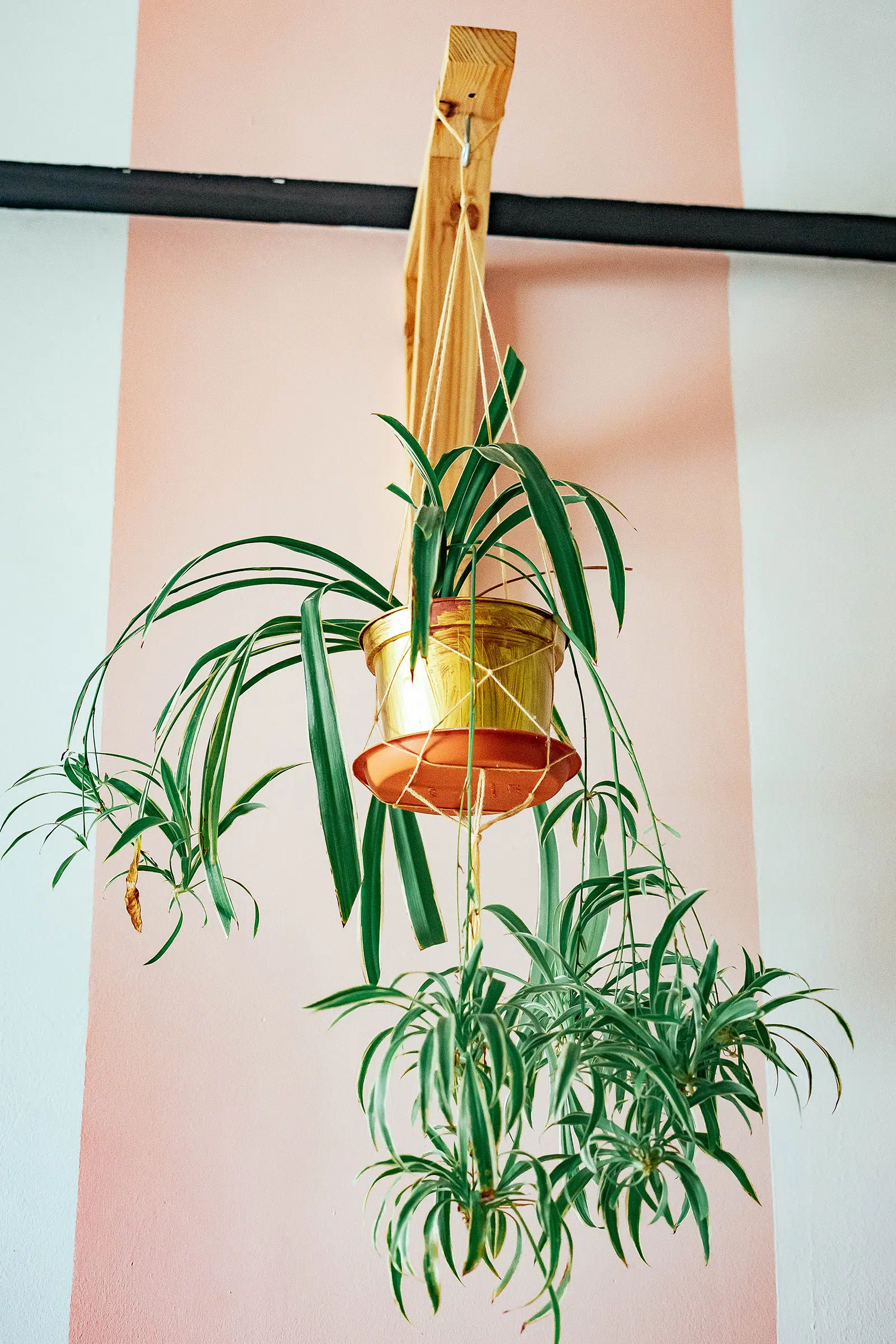
- Light: Chlorophytum plants prefer bright indirect light. They can tolerate some direct sunlight, but too much can burn their leaves. Place your plant near a window with filtered light for optimal growth.
- Temperature: Chlorophytum plants prefer moderate temperatures between 60-75°F (15-24°C). Avoid placing them in drafts or near heating/cooling vents, as extreme temperature changes can stress the plant.
- Watering: Keep the soil evenly moist, but not soggy. Allow the top inch of soil to dry out before watering again. Overwatering can lead to root rot, while underwatering can cause the leaves to wilt. Use room temperature water and avoid letting the plant sit in water.
- Humidity: Chlorophytum plants prefer moderate humidity levels. If the air is too dry, use a humidifier or place a tray of water near the plant to increase humidity. Misting the leaves occasionally can also help.
- Fertilizer: Feed your Chlorophytum plant with a balanced, water-soluble fertilizer every 2-3 months during the growing season (spring and summer). Follow the instructions on the fertilizer packaging for proper dosage.
- Pruning: Trim any yellow or brown leaves to keep the plant looking healthy and tidy. You can also remove any long, leggy stems to encourage the growth of new, bushier foliage.
- Propagation: Chlorophytum plants can be easily propagated by division. Carefully separate the plant into smaller clusters and replant them in separate pots. This is best done during the spring when the plant is actively growing.
- Pests: Common pests that can affect Chlorophytum plants include spider mites and mealybugs. Regularly inspect the leaves for any signs of pests and treat them as soon as possible using appropriate insecticides or natural remedies like neem oil.
By following these care tips for Chlorophytum plants, you can ensure that your plant stays healthy and thrives in your home or garden. With their trailing foliage and easy maintenance, Chlorophytum plants are a great addition to any plant collection.
Understanding Chlorophytum
Chlorophytum is a genus of perennial flowering plants in the Asparagaceae family. It is commonly known as spider plant, ribbon plant, or airplane plant. Native to tropical and subtropical regions of Africa, Chlorophytum has become a popular choice for indoor gardening due to its attractive foliage and ease of care.
Characteristics
- Chlorophytum plants have long, arching leaves that are typically green or variegated with white stripes.
- The leaves grow in a rosette pattern, giving the plant its unique appearance.
- Spider plants produce small, white flowers on long, slender stalks that emerge from the center of the plant.
- These flowers eventually develop into plantlets, or “spiderettes,” which can be grown into new plants by rooting them in water or soil.
Benefits
Spider plants are not only aesthetically pleasing but also offer several benefits for indoor environments:
- Air purification: Chlorophytum plants are known for their ability to remove pollutants from the air, such as formaldehyde, benzene, and carbon monoxide.
- Improved humidity: Spider plants release moisture into the air through their leaves, helping to increase humidity levels in dry indoor environments.
- Easy propagation: As mentioned earlier, spider plants readily produce plantlets that can be easily propagated, making them an ideal choice for beginner gardeners.
Care Tips
To keep your Chlorophytum plants happy and healthy, follow these care tips:
- Light: Spider plants prefer bright, indirect light but can tolerate low light conditions.
- Watering: Water your Chlorophytum thoroughly, allowing the top inch of soil to dry out before watering again.
- Temperature: Spider plants prefer temperatures between 65-75°F (18-24°C) and can tolerate slightly lower temperatures.
- Fertilizer: Feed your Chlorophytum with a balanced houseplant fertilizer once a month during the growing season.
- Propagation: Take advantage of the plantlets produced by your spider plant by rooting them in water or soil to create new plants.
Conclusion
Chlorophytum, commonly known as spider plant, is a popular choice for indoor gardening due to its attractive foliage and ease of care. In addition to its aesthetic appeal, spider plants offer air purification and humidity benefits. By following proper care techniques, you can enjoy healthy and thriving Chlorophytum plants in your home or office.
Choosing the Right Location
Choosing the right location for your Chlorophytum plant is essential for its growth and health. Here are a few factors to consider when selecting a suitable spot:
- Light: Chlorophytum plants prefer bright, indirect light. Place them near a window with filtered sunlight or in a well-lit area of your home.
- Temperature: These plants thrive in temperatures between 60°F (15°C) and 75°F (24°C). Avoid placing them in areas with extreme temperature fluctuations or near drafts.
- Humidity: Chlorophytum plants appreciate moderate humidity levels. You can increase humidity by placing a tray of water near the plant or by using a humidifier.
- Air circulation: Good air circulation is important for Chlorophytum plants to prevent the growth of mold or fungal diseases. Ensure that the chosen location allows for proper air movement.
- Space: Consider the size and growth habit of your Chlorophytum plant when choosing a location. Some species have trailing foliage and may require more space, while others can be placed on shelves or in hanging baskets.
By taking these factors into account, you can provide the optimal environment for your Chlorophytum plant and promote its overall well-being.
Watering and Humidity
Watering is an important aspect of Chlorophytum care. These plants prefer to be evenly moist, but not waterlogged. Overwatering can lead to root rot and other issues, so it’s important to allow the soil to dry out slightly between waterings.
During the growing season (spring and summer), water your Chlorophytum thoroughly and then allow the top inch of soil to dry before watering again. This will help prevent overwatering and ensure that the plants have adequate moisture.
In the winter months, when the plant is in its dormant phase, you can reduce the frequency of watering. Allow the soil to dry out a bit more between waterings, but be sure not to let it dry out completely.
Humidity is not a major concern for Chlorophytum plants. They can tolerate average room humidity levels, but they do appreciate a slightly increased humidity. You can increase humidity by placing a tray of water near the plants or by using a humidifier.
Tips for Watering Chlorophytum:
- Water thoroughly, allowing the excess water to drain out of the bottom of the pot.
- Allow the top inch of soil to dry out between waterings during the growing season.
- Reduce watering frequency in the winter months, but don’t let the soil dry out completely.
- Keep the humidity levels slightly increased, especially during dry winter months.
By following these watering and humidity tips, you can help ensure the health and vitality of your Chlorophytum plants.
Fertilizing Chlorophytum
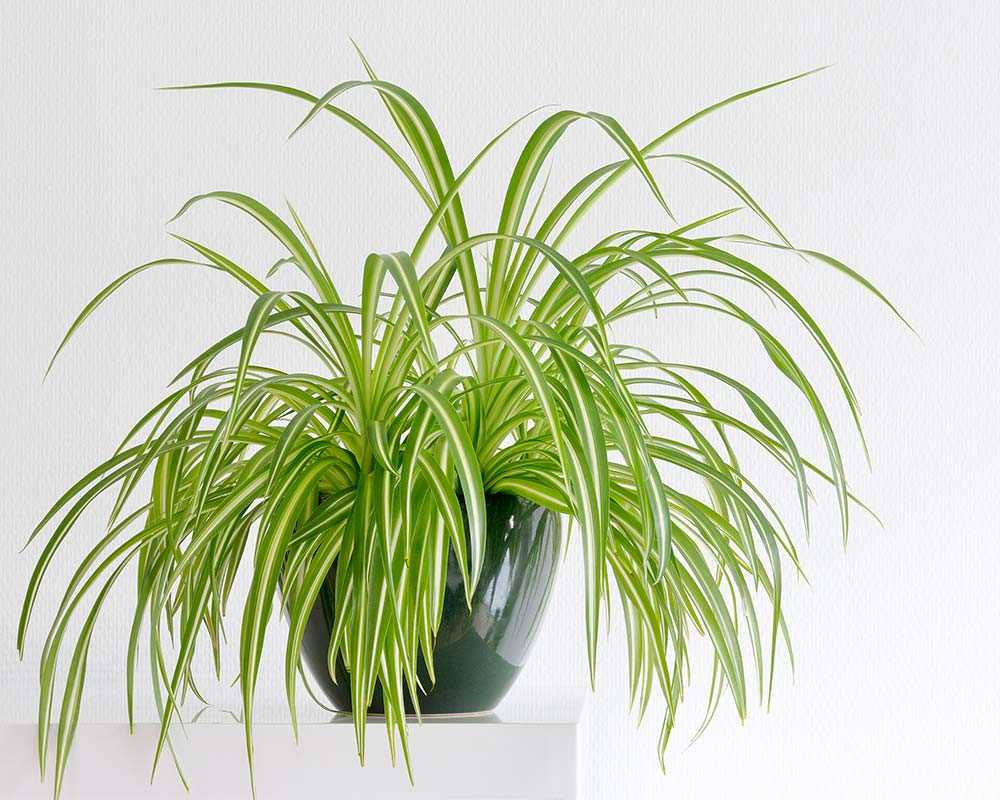
Proper fertilization is an essential aspect of caring for Chlorophytum plants. By providing adequate nutrients, you can promote healthy growth and ensure the plant’s overall well-being. Here are some guidelines to follow when fertilizing your Chlorophytum:
Choose the right fertilizer
When selecting a fertilizer for your Chlorophytum, it’s best to opt for a balanced, water-soluble fertilizer. Look for a formula with an equal ratio of nitrogen (N), phosphorus (P), and potassium (K). This balanced blend will provide your plants with all the necessary nutrients they need for optimal growth.
Follow the recommended dosage
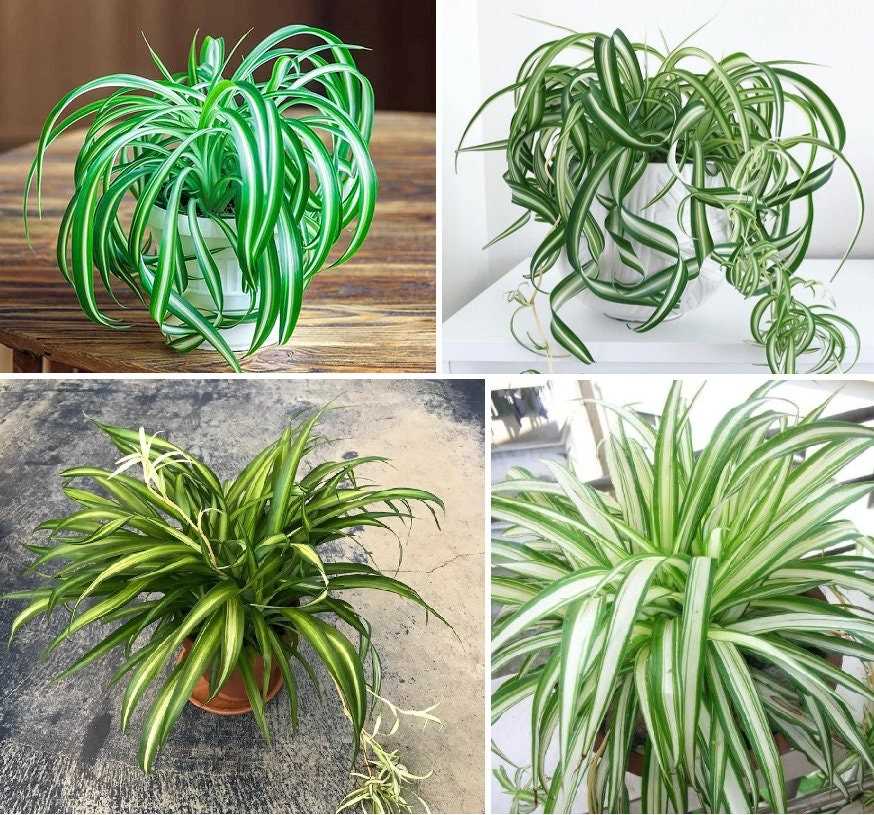
It’s important to follow the instructions provided on the fertilizer packaging carefully. Over-fertilizing can lead to fertilizer burn and other issues, while under-fertilizing may deprive your Chlorophytum of necessary nutrients. Measure the recommended amount of fertilizer according to your plant’s size and dilute it in water before application.
Fertilize during the growing season
Chlorophytum plants are most actively growing during the spring and summer months. This is the ideal time to fertilize your plants. Avoid fertilizing during the plant’s dormant period, as it may not be able to effectively absorb the nutrients.
Frequency of fertilization
For most Chlorophytum plants, fertilizing once a month during the growing season is sufficient. However, the frequency may vary depending on the specific requirements of your plant species. Always refer to the guidelines provided with your chosen fertilizer or consult a gardening expert for specific instructions.
Apply fertilizer evenly
When applying fertilizer, make sure it is distributed evenly around the plant’s base. Avoid getting fertilizer directly on the leaves, as it can cause burns. Water the plant thoroughly after fertilization to help disperse the nutrients throughout the soil.
Observation and adjustment
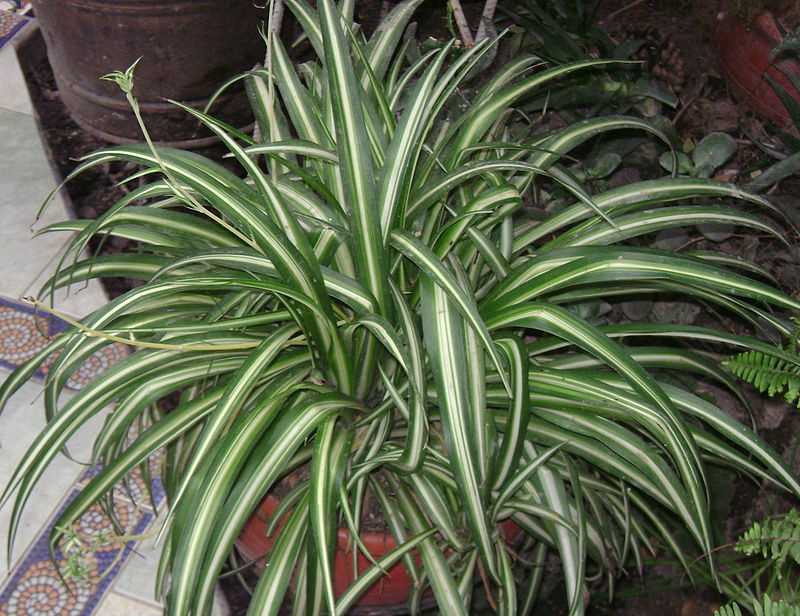
Pay attention to how your Chlorophytum responds to the fertilization. If you notice any signs of nutrient deficiencies or excesses, such as yellowing leaves or stunted growth, adjust the fertilization schedule or dosage accordingly. Regular observation and adjustment will help ensure that your Chlorophytum receives the ideal amount of nutrients.
Following these fertilizing guidelines will help you provide your Chlorophytum plants with the nutrients they need to thrive. With proper fertilization, you can enjoy green and healthy plants that will beautify your space.
Common Problems and Solutions
1. Yellowing leaves
If the leaves of your Chlorophytum plant are turning yellow, it is usually a sign of overwatering. To fix this issue, reduce the frequency of watering and make sure the pot has good drainage. Allow the top few inches of soil to dry out between waterings. Yellow leaves can also be caused by inadequate lighting, so consider moving the plant to a brighter location.
2. Brown tips on leaves
Brown tips on the leaves of a Chlorophytum plant can indicate underwatering. Make sure you are watering the plant regularly and keeping the soil evenly moist. Brown tips can also be a sign of low humidity, especially if you live in a dry climate. Increase humidity by placing a humidifier near the plant or by placing a tray filled with water and pebbles underneath the pot.
3. Pest infestation
Chlorophytum plants are generally resistant to pests, but occasionally they can be affected by spider mites or mealybugs. If you notice webbing or a white, cottony substance on the leaves, it’s a sign of a pest infestation. To treat the problem, isolate the affected plant and wipe the leaves with a damp cloth. You can also use insecticidal soap or neem oil spray to control the pests. Repeat the treatment as necessary.
4. Wilting leaves
Wilting leaves can be a sign of both overwatering and underwatering. Check the moisture level of the soil by sticking your finger about an inch deep into the soil. If it feels dry, water the plant thoroughly. If it feels moist, hold off on watering for a few days. Inconsistent watering can also cause wilting, so make sure you are watering the plant regularly and evenly.
5. Stunted growth
If your Chlorophytum plant is not growing as well as expected, it may be due to inadequate lighting or nutrient deficiencies. Make sure the plant is placed in a bright location, but avoid direct sunlight. Fertilize the plant every 2-4 weeks during the growing season with a balanced, water-soluble fertilizer. Follow the instructions on the fertilizer packaging for the correct dosage.
6. Root rot
Overwatering can lead to root rot, which is a fungal infection that can cause the roots to become mushy, dark, and spongy. To treat root rot, you will need to remove the affected plant from its pot, trim away any rotten roots, and repot the plant in fresh, well-draining soil. Make sure the pot has good drainage and reduce the frequency of watering to prevent future root rot.
By addressing these common problems and providing the appropriate solutions, you can ensure the health and vitality of your Chlorophytum plant.
Propagating Chlorophytum
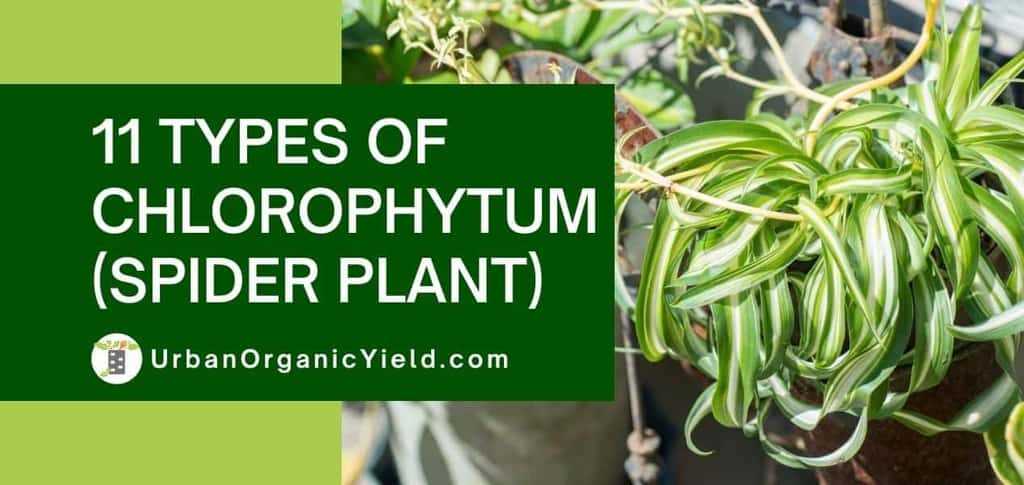
Chlorophytum, also known as spider plant, is a popular houseplant known for its long, arching leaves and easy care requirements. One of the reasons why this plant is so loved by indoor gardeners is its ability to quickly propagate and produce new plants. Here are several methods you can use to propagate your Chlorophytum:
Propagation by Division
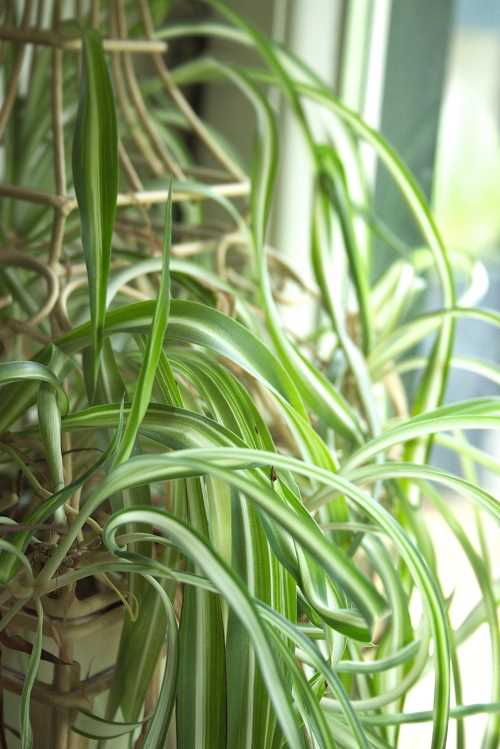
One of the easiest ways to propagate Chlorophytum is by division. This method works best when the plant is large and has multiple clumps of leaves.
- Remove the Chlorophytum from its pot and gently separate the clumps of leaves.
- Inspect each clump for healthy roots and leaves.
- Using a sharp and sterilized knife or pair of scissors, cut the clumps of leaves into smaller sections, making sure each section has roots and leaves.
- Plant each divided section in a separate pot filled with well-draining soil.
- Water the newly potted sections thoroughly and place them in a bright location with indirect sunlight.
- Continue to care for the newly potted sections as you would for a mature Chlorophytum plant.
Propagation by Plantlets
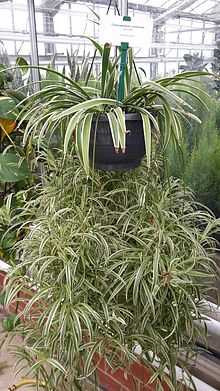
Chlorophytum produces plantlets, also known as spiderettes, that grow on long stems called runners. These plantlets can be easily propagated to grow new plants.
- Locate the plantlets growing on the runners.
- Wait until the plantlets have developed roots of their own, which will be visible as small white or brown roots.
- Carefully cut the plantlets away from the mother plant using a sterilized knife or pair of scissors.
- Plant the separated plantlets in small pots filled with well-draining soil.
- Water the newly potted plantlets and place them in a bright location with indirect sunlight.
- Continue to care for the newly potted plantlets as you would for a mature Chlorophytum plant.
Propagation by Seeds
While propagating Chlorophytum by seeds is possible, it is a much slower and less reliable method compared to propagation by division or plantlets. However, if you want to give it a try, here’s how:
- Collect the mature seeds from a mature Chlorophytum plant.
- Prepare a seed tray or small pots with well-draining soil.
- Sow the seeds onto the surface of the soil and lightly cover them with a thin layer of soil.
- Water the soil gently to keep it moist but not waterlogged.
- Place the seed tray or pots in a warm location with indirect sunlight.
- Keep the soil consistently moist and be patient, as it may take several weeks for the seeds to germinate.
- Once the seedlings have grown larger and developed several sets of leaves, you can transplant them into individual pots.
Conclusion
With these methods of propagation, you can easily multiply your Chlorophytum collection and share the joy of owning this beautiful houseplant with friends and family. Whether you choose to divide the plant, propagate from plantlets, or try your hand at growing from seeds, each method has its own unique benefits and rewards. Experiment and find the best propagation method that works for you and your Chlorophytum plants.
Chlorophytum Species
Chlorophytum, commonly known as spider plants or airplane plants, is a genus of flowering plants in the family Asparagaceae. There are about 200 species within this genus, with some of the most popular and widely cultivated species being:
- Chlorophytum comosum – Also known as the spider plant, this is one of the most common species found in homes and gardens. It has long, arching leaves that are green with white stripes down the center. It produces small white flowers on long stalks, and it is known for its ability to tolerate a wide range of light conditions.
- Chlorophytum laxum – This species is native to South Africa and is sometimes called the ribbon plant. It has long, flat leaves that are green in color. It produces small white flowers that are often compared to miniature lilies. It is a relatively low-maintenance plant and is suitable for growing both indoors and outdoors.
- Chlorophytum orchidastrum – Also known as the green flame or green spider plant, this species has long, arching leaves that are green with white edges. It is notable for its cascading habit, making it a popular choice for hanging baskets. It produces small white flowers on long stalks and is a relatively easy plant to care for.
- Chlorophytum bichetii – This species is native to Madagascar and has long, arching leaves that are green with white stripes. It produces small white flowers and is known for its compact size, making it suitable for smaller spaces. It is a relatively low-maintenance plant and can tolerate a range of light conditions.
In addition to these species, there are many other lesser-known species of Chlorophytum that are found in various parts of the world. Each species has its own unique characteristics and care requirements, so it’s important to research and understand the specific needs of the species you are growing.
Overall, Chlorophytum species are popular houseplants due to their attractive foliage, ease of care, and ability to purify indoor air. They are suitable for both beginner and experienced gardeners and can be grown in a variety of settings, including hanging baskets, pots, and gardens.
| Species | Common Name | Characteristics |
|---|---|---|
| Chlorophytum comosum | Spider plant | Long, arching leaves with white stripes; small white flowers |
| Chlorophytum laxum | Ribbon plant | Long, flat leaves; small white flowers |
| Chlorophytum orchidastrum | Green flame | Long, arching leaves with white edges; cascading habit |
| Chlorophytum bichetii | N/A | Long, arching leaves with white stripes; small white flowers; compact size |
Showcasing Chlorophytum with Photos

Chlorophytum, also known as the Spider Plant or Airplane Plant, is a popular indoor plant favored for its air-purifying qualities and easy care. It features long, arching leaves with a vibrant green color and white stripes that resemble spider webs, giving it its common name.
Here are some stunning photos of different species and varieties of Chlorophytum:
Chlorophytum comosum ‘Vittatum’
This variety of Spider Plant has long, slender leaves with a central white stripe and green edges. It is one of the most common and classic varieties of Chlorophytum.

Chlorophytum comosum ‘Bonnie’
‘Bonnie’ is a compact variety of Spider Plant with curly leaves that have a white central stripe and green margins. It is a popular choice for hanging baskets and small spaces.

Chlorophytum laxum
Chlorophytum laxum, also known as the Ocean Spider Plant or False Spider Plant, has broader leaves compared to other species. It forms rosettes of arching leaves with green edges and a central white stripe.

Chlorophytum plants are not only visually appealing but also have numerous health benefits. They are known for their ability to clean the air by removing toxins such as formaldehyde and xylene. Additionally, they are easy to propagate and make great beginner plants.
If you’re looking to add a touch of greenery to your indoor space, consider getting a Chlorophytum plant. With their beautiful foliage and air-purifying qualities, they are sure to liven up any room!
Q&A:
What is Chlorophytum?
Chlorophytum is a genus of flowering plants that belongs to the family Asparagaceae. It is commonly known as “spider plant” or “airplane plant”.
How do I care for a Chlorophytum plant?
Caring for a Chlorophytum plant is relatively easy. It requires bright, indirect light, regular watering, and well-draining soil. It is a low-maintenance plant that can tolerate a wide range of conditions.
What are the different species of Chlorophytum?
There are several species of Chlorophytum, but the most popular ones are Chlorophytum comosum, Chlorophytum laxum, and Chlorophytum orchidastrum. Each species has its own unique characteristics and care requirements.
Can Chlorophytum plants be grown indoors?
Yes, Chlorophytum plants can be grown indoors. They are popular houseplants due to their ability to tolerate low light conditions and their air-purifying properties.
How do I propagate a Chlorophytum plant?
There are several methods of propagating a Chlorophytum plant, including dividing the plant, planting the plantlets that grow from the spiderettes, or rooting cuttings in water or soil.
Are Chlorophytum plants safe for pets?
Chlorophytum plants are generally considered non-toxic to pets, including cats and dogs. However, it’s always a good idea to keep any plant out of reach of pets to avoid accidental ingestion.
Video:
7 Tips To Stop Brown Tips On Your Spider Plant










